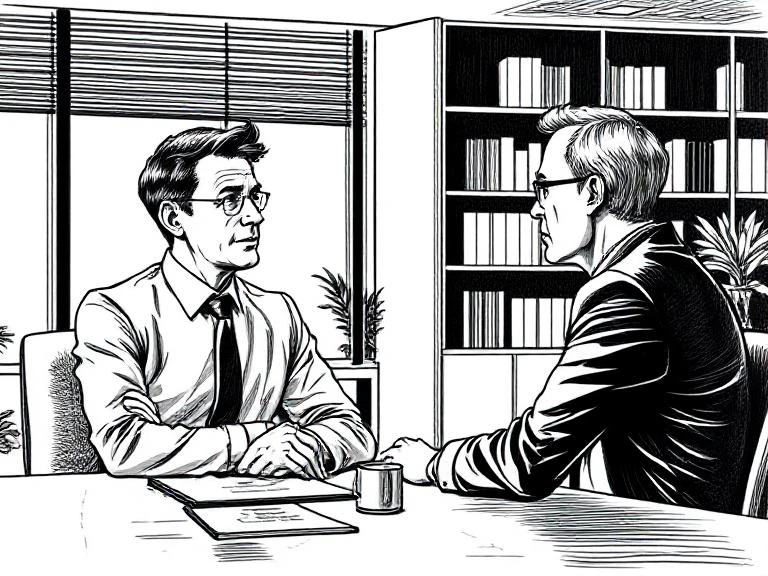Course for conflict management and negotiation techniques - What is this good for?
My journey to better negotiations! Years ago, I attended a course on "Conflict Management and Negotiation Techniques" that significantly impacted me. I'm sharing my most important lessons!

Intro
I attended the training course I am reporting on here several years ago. However, the course itself remains in my memory and has had a significant impact on me. It was the start of my communication journey.
Background
With my company, konzentrik, I was challenged to conduct contract negotiations for extensive work packages to secure the capacity utilization for my innovative team in the long term. The aim was to strike a balance between a fixed budget and scope of work in the form of a work contract on the one hand and a flexible definition of requirements in an agile sense on the other. As is usual in such situations, I did not conduct the negotiations directly with the project managers but with their superiors, the managing director. I felt misunderstood and unappreciated in the discussions and was not convinced that my arguments would generate an understanding of my situation on the other side. The negotiations were characterized by resentment and irritation, threatening to become intense and damaging conflicts. So what should I do?
My approach: further training
Fortunately, it was already clear then that I had to change and that I couldn't hope that something magical would happen to the person I was talking to. When a newsletter from the company oose landed in my mailbox at that time, I had an option to act. The newsletter offered a 5-day "conflict management and negotiation techniques" course in Hamburg. Getting there was easy, and the topic dealt with my problem. I had no idea at the time that this course would have such a lasting influence and shape my behavior in both my professional and private life.
What did I take away with me?
The most important lesson was the concept of active listening. This involves understanding the other person's point of view. What does my conversation partner want to tell me, and, more importantly, what are their circumstances? While the other person is speaking, I don't formulate the response but rather listen carefully to what is being said. I ask specific questions and go into depth to understand why.
The following applies: if I listen, I can learn something. If I speak for myself, I cannot. I only repeat things that I already know. By engaging in this behavior, I clarify my interest and put myself in the other person's shoes. This change of perspective is usually perceived as empathetic and appreciative, provided the interest is genuine and not feigned.
My behavior may open up the person I am talking to and allow me to understand their motives. Most of the time, factual reasons are initially presented rather than the actual motivation. Once I know, it is time to show my viewpoint. This is where the Harvard's negotiation technique approach helps. This approach is characterized by transparency and fair cooperation and focuses on problem-solving. It is no longer about manipulating the negotiating partner and ripping them off.
It is important to note that both parties are on an equal footing - neither party is more substantial, better, or in the right. If it is otherwise, we do not negotiate, but one side dictates what the other party does. There are, therefore, two equal parties at the table, and this is how we should behave. Evident in our positions and soft in our words.
Through honesty and transparency on both sides, a solution corridor opens up in which the most significant mutual benefit is developed. Because everyone knows which aspects are central and immutable and which points, there is room for negotiation. This form of negotiation is characterized by respectful interaction. If both sides behave according to this code, the time spent talking defines mutual compromises and concessions. If no standard solution can be found, this quickly becomes clear, and the talks can be ended. No one is angry because time was wasted; conversely, everyone knows where they stand. This has always led to quick and easy results - honesty and transparency work.
Conclusion
After the training, my negotiations with the managing director suddenly changed. I spoke less and wanted to clarify my position, but when I listened, asked questions, and understood why the terms and conditions were presented to me, we could consider alternatives together without anyone feeling taken advantage of. By focusing on the joint solution, we agreed quickly and easily.
In addition to the many professional negotiations, I was also able to use the knowledge in my private life. When going out to eat or at a party, good friends appreciate listening instead of talking to yourself and adding depth to the conversation with the right questions.
It helped me a lot with my children. Whenever they have wishes, and we discuss how our world should turn, we discuss, plan, and talk on an equal footing. This works well when they experience it from a young age and celebrate it as teenagers. It is not always easy, but it is also a good way to raise them to be opinionated and independent thinkers.
Finally, I would like to thank the course leader at the time. His presentation of the topic and leadership throughout the days were incredible. Thank you very much, Uwe Vigenschow.
What seminars have you attended that you would recommend?